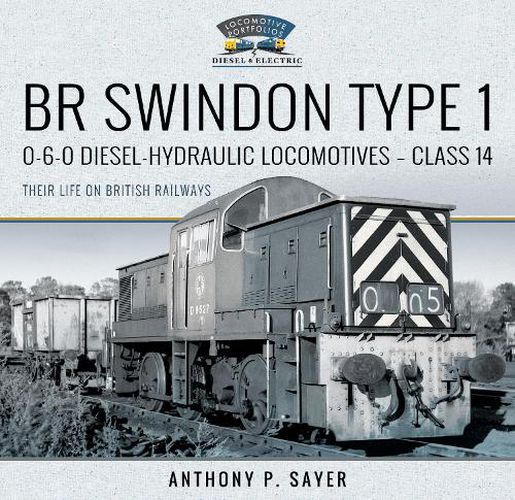Readings Newsletter
Become a Readings Member to make your shopping experience even easier.
Sign in or sign up for free!
You’re not far away from qualifying for FREE standard shipping within Australia
You’ve qualified for FREE standard shipping within Australia
The cart is loading…






In 1957 the Western Region of BR identified a need for 400 Type 1 diesel locomotives for short-haul freight duties but it was 1964 before the first was introduced. General-purpose Type 1s were being delivered elsewhere but WR management regarded these as too expensive for their requirements. After completion of design work on the ‘Western’ locomotives, Swindon turned to creating a cheap ‘no-frills’ Type 1. At 65% of the cost of the Bo-Bo alternative, the Swindon 0-6-0 represented a better ‘fit’ for the trip-freight niche. Since 1957 the privatised road-haulage industry had decimated BR’s wagon-load sector; whilst the 1962 Transport Act released BR from its financially-debilitating public-service obligations, the damage had been done, and the 1963 Beeching Plan focused on closing unprofitable routes and associated services. By 1963 the original requirement for 400 Type 1s had been massively reduced. Fifty-six locomotives were constructed in 1964/65. Continuing traffic losses resulted in the whole class becoming redundant by 1969. Fortuitously, a demand for high-powered diesels on the larger industrial railway systems saw the bulk of the locomotives finding useful employment for a further twenty years.This book covers the life of these locomotives on British Railways; a companion volume will provide an extensive appraisal of Their Life in Industry for the forty-eight locomotives which made the successful transition after withdrawal from BR. AUTHOR: Anthony Sayer is a life-long railway enthusiast with an interest in the history of the early British diesel and electric locomotive classes. This is the author’s fifth book in the ‘Locomotive Portfolio’ series, following on from the North British Type 2 (Classes 21 & 29), the Metropolitan-Vickers Type 2 (Class 28), the Clayton Type 1 (Class 17) and BTH/NBL Type 1 (Classes 15 & 16) books published between 2019 and 2021. Anthony lives in the north-east of England and has now retired after 37 years in the steel industry with responsibilities in both transport planning and supply-chain logistics.
280 colour and b/w illustrations
$9.00 standard shipping within Australia
FREE standard shipping within Australia for orders over $100.00
Express & International shipping calculated at checkout
In 1957 the Western Region of BR identified a need for 400 Type 1 diesel locomotives for short-haul freight duties but it was 1964 before the first was introduced. General-purpose Type 1s were being delivered elsewhere but WR management regarded these as too expensive for their requirements. After completion of design work on the ‘Western’ locomotives, Swindon turned to creating a cheap ‘no-frills’ Type 1. At 65% of the cost of the Bo-Bo alternative, the Swindon 0-6-0 represented a better ‘fit’ for the trip-freight niche. Since 1957 the privatised road-haulage industry had decimated BR’s wagon-load sector; whilst the 1962 Transport Act released BR from its financially-debilitating public-service obligations, the damage had been done, and the 1963 Beeching Plan focused on closing unprofitable routes and associated services. By 1963 the original requirement for 400 Type 1s had been massively reduced. Fifty-six locomotives were constructed in 1964/65. Continuing traffic losses resulted in the whole class becoming redundant by 1969. Fortuitously, a demand for high-powered diesels on the larger industrial railway systems saw the bulk of the locomotives finding useful employment for a further twenty years.This book covers the life of these locomotives on British Railways; a companion volume will provide an extensive appraisal of Their Life in Industry for the forty-eight locomotives which made the successful transition after withdrawal from BR. AUTHOR: Anthony Sayer is a life-long railway enthusiast with an interest in the history of the early British diesel and electric locomotive classes. This is the author’s fifth book in the ‘Locomotive Portfolio’ series, following on from the North British Type 2 (Classes 21 & 29), the Metropolitan-Vickers Type 2 (Class 28), the Clayton Type 1 (Class 17) and BTH/NBL Type 1 (Classes 15 & 16) books published between 2019 and 2021. Anthony lives in the north-east of England and has now retired after 37 years in the steel industry with responsibilities in both transport planning and supply-chain logistics.
280 colour and b/w illustrations